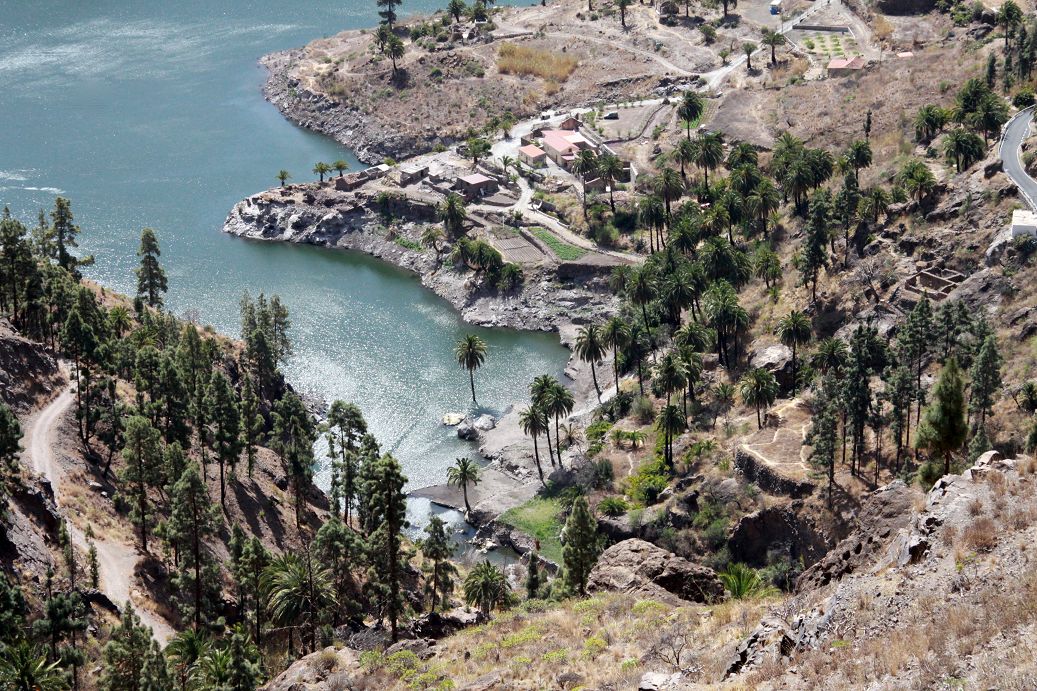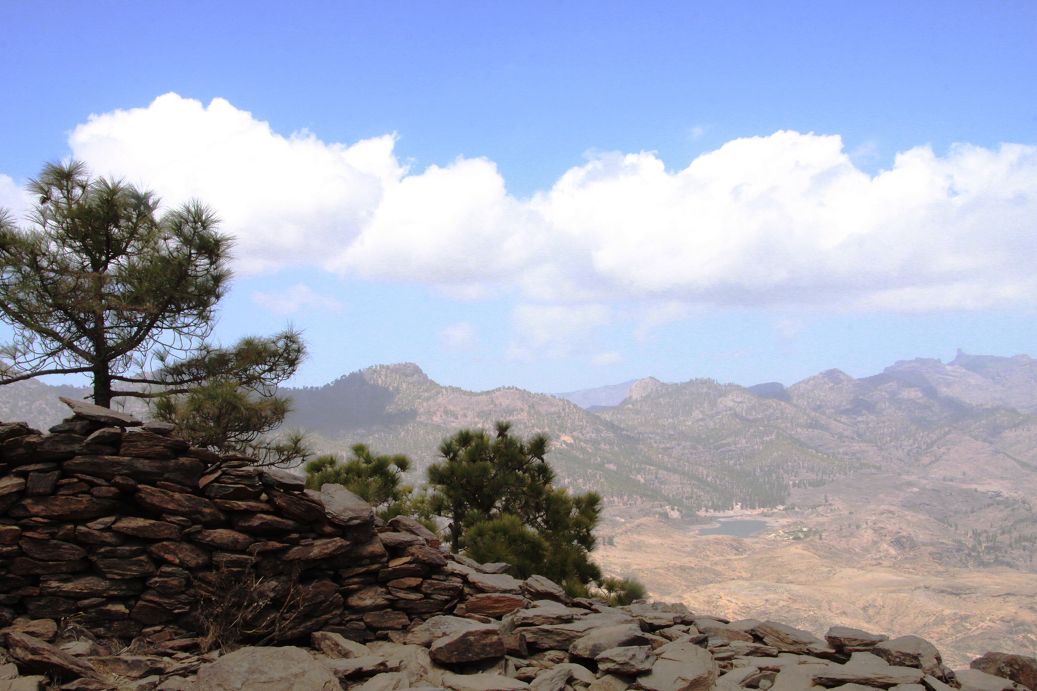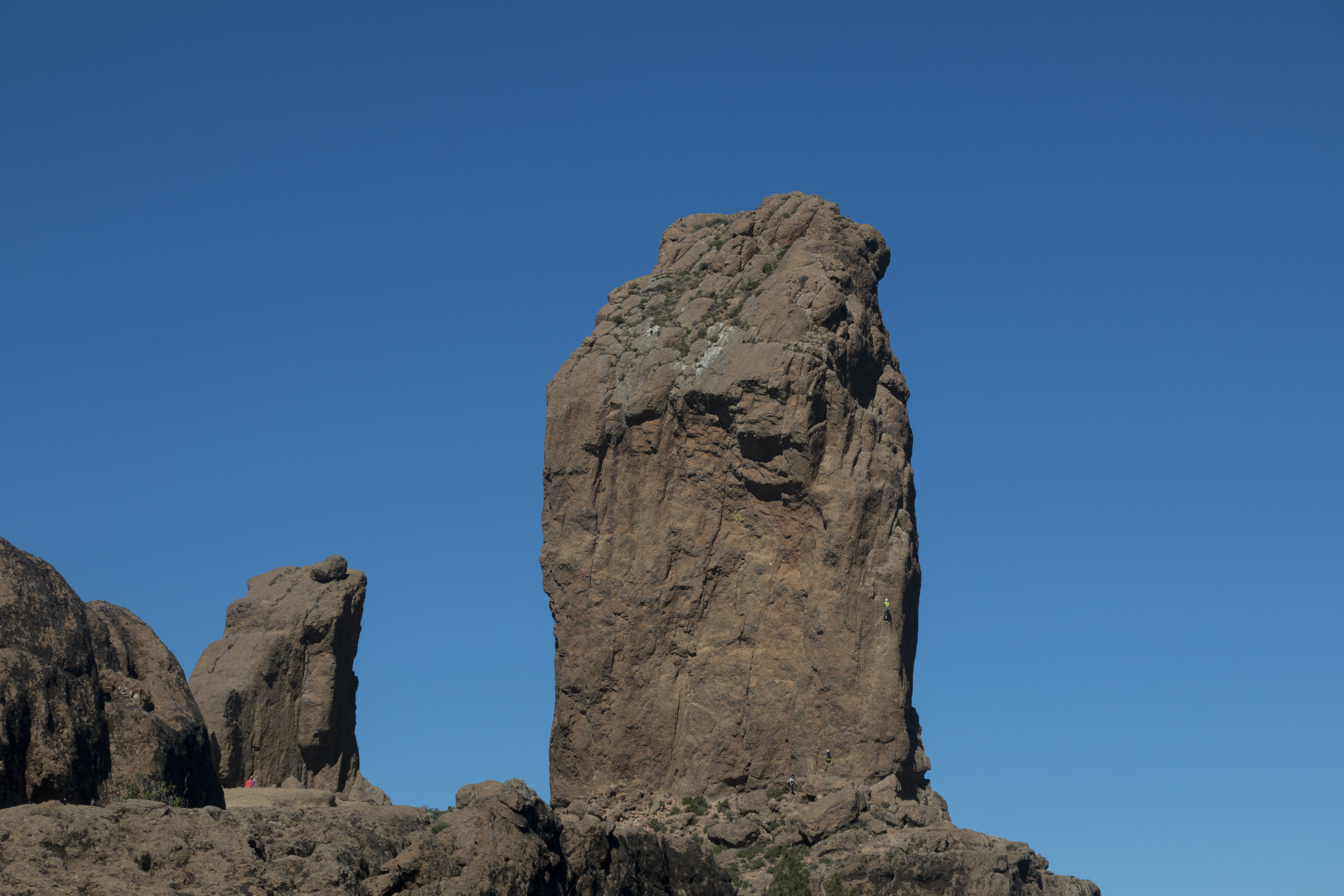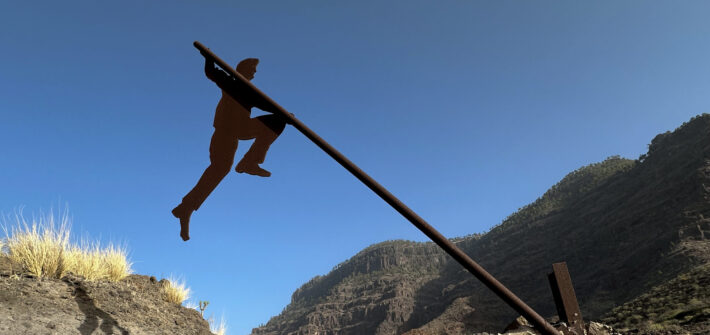Veneguera – A Traditional Canarian Village Away from the Tourist Areas Veneguera is a small village on Gran Canaria, located within the municipality of Mogán in the southwestern part of the island. The village is renowned for its picturesque setting in a fertile valley, surrounded by impressive mountains and lush vegetation typical of the region. […]
Gran Canaria
Gran Canaria in numbers
Gran Canaria, with the capital Las Palmas de Gran Canaria, is the third largest of the Canary Islands in terms of land area with 1532 square kilometres. It is circular and has a diameter of approximately 50 kilometres. But of the population, it is with its nearly 850.000 inhabitants on place two just behind Tenerife. The distance to the African coast is 210 kilometres.
As the island is so rich in contrasts in landscape and has a lot of variety to offer, the island is also often called a miniature continent. Wide areas of the island are protected in 32 parks.
Landscape, climate, vegetation
As on the neighbouring islands, the climate in Gran Canaria is divided in two. The north is more humid and the vegetation greener. And the south of the island is rather dry and warmer. Due to this and the different altitudes, the Canary Island has different vegetation zones.
In the north there were, as still today on the neighbouring islands, until the 15th century mainly laurel forests. But these have disappeared on Gran Canaria except for a few remaining areas. They were cut down because the wood was needed for the construction of the sugar industry at that time. However, there are again numerous Canarian pines in the heights of the island today. The pine stands had also been cleared extensively. But the tough Canarian pine survived.
In the dry beach regions, there are beach bushes and bushes that depend on the salty wind. In the interior you will find Canarian palms, dragon trees, spurge and the viper’s head. Day temperatures on the island average between 18 and 26 degrees all year round.
History, economy and tourism
The name Gran Canaria leads one to believe that it is related to the size of the island. But in fact it does not mean “big Canary Island”, but derives from the Latin word dog (canis) or the Berber tribe Canarii. Originally there are said to have been many dogs on Gran Canaria. Still today the Canarian Great Dane is an island landmark.
On the island the natives lived a very simple life in caves and stone houses. A little of this life can still be seen today in the museums, as for example in the Museo Canario in Las Palmas and in the Museo de la Rama in Agaete in the northwest. There are old Canarian finds or in Agaete a village with scenes from the life of the old Canarians. In the 15th century the Spaniards conquered the island.
The main source of income today is tourism. Around 3 million people visit Gran Canaria every year. Main center of tourism is the south of the island with the places Maspalomas and Playa del Inglés. Gran Canaria is also a popular holiday destination for homosexuals. The annual carnival with its South American flair is colourful and diverse like the whole island.
Interesting to know that Las Palmas de Gran Canaria in 2019 is also described as one of the 11 best places for digital nomads.
Sights on Gran Canaria
The island’s attractions include the white dunes of Maspalomas, the cave houses of Artenara, the drinking water dam in the Barranco de Arguineguin and the striking Roque Nublo in the centre of the island. But this is by far not all to do justice to the many possibilities that Gran Canaria offers for culture seekers, athletes and hikers.
Gran Canaria is also very popular with cyclists. Everywhere you will see them cycling on roads and paths. Accordingly, there are also many small bars that specialize in refreshment for cyclists.
Hiking in Gran Canaria
The term “miniature continent” also refers to the varied nature that awaits you in Gran Canaria. Besides volcanoes you will find thelarge white dune fields of Maspalomas in the south as not only a strong colour contrast. There are barrancos, reservoirs and subtropical valleys. The highest volcano of the island is the Pico de las Nieves with its 1.949 meters. In its neighbourhood is also the above mentioned 1813 meter high Roque Nublo. Daring climbers try their hand at this rock. Those who only want to do a small hike will definitely walk on the small circular path around this striking rock.
But Gran Canaria offers wonderful hiking tours around the whole island. I especially like the hike in the western part of the island through lonely Barrancos to the remote beach of Güi Güi. For those who prefer to go inland to the mountains, we recommend the hike through the nature reserve Inagua.
The island of Gran Canaria with its numerous nature parks has much more to offer than just the tourist strongholds in the south. If you want to get more information, you can do this here on the official homepage of Gran Canaria.
Circular Walk Tenteniguada – Caldera de Los Marteles
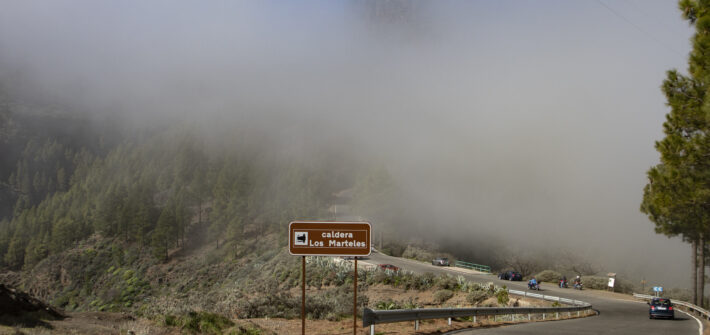
Tenteniguada and the Renowned Sendero Caldera de Los Marteles Tenteniguada is a small, picturesque village on the island of Gran Canaria, part of the Valsequillo municipality. Located in the central part of the island at about 800 meters above sea level, it is known for its natural beauty and the spectacular scenery that surrounds it. […]
Vega de San Mateo – Circular Walk through the Barranco del Agua
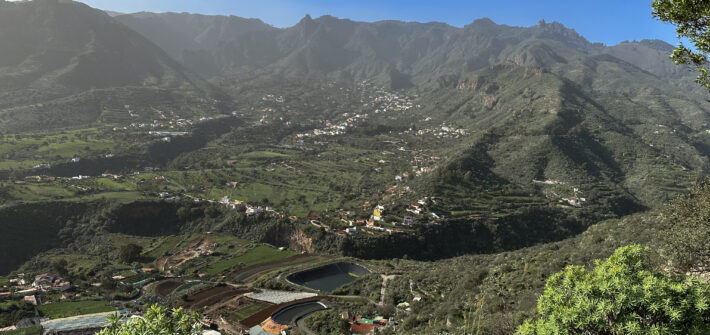
The Barranco del Agua – A Fascinating Natural Area The Barranco del Agua near Vega de San Mateo is one of the many impressive ravines on the island of Gran Canaria, known for its diverse and captivating landscape. This ravine, located in the heart of the island’s mountainous interior, is a typical example of the […]
Two Major Hiking Routes around Vega de San Mateo
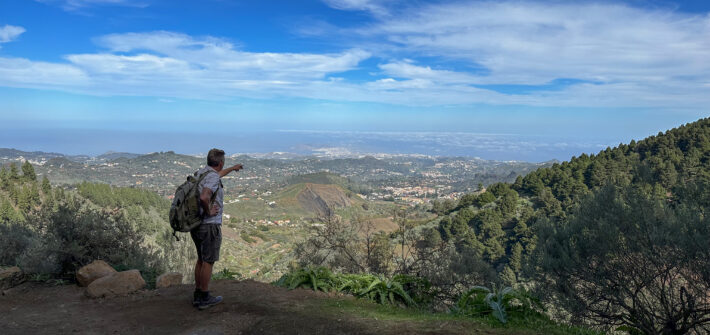
Vega de San Mateo – a Rural and Traditional Mountain Village Vega de San Mateo is a municipality in the central part of the Canary Island of Gran Canaria. It is a rural and traditional community known for its agriculture, markets, cultural festivals, and natural beauty. Situated at an altitude of 800 meters in the […]
Circular Walk Cuevas de Majada Alta
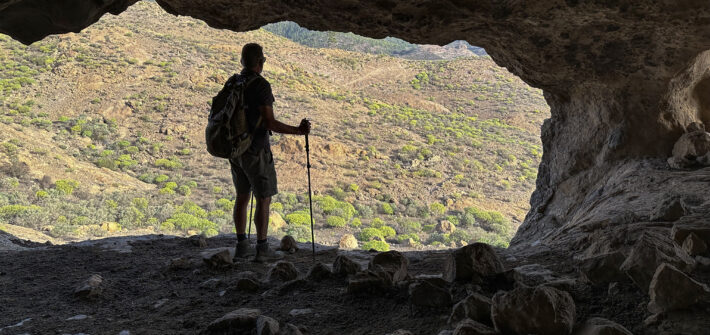
The Caves Cuevas de Majada Alta The Cuevas de Majada Alta caves are located on the Majada Alta plateau between the reservoirs Presa de Las Niñas and Presa del Salto del Perro. They are accessible via a hiking trail featured in this walk and offer an impressive view of the surrounding landscape. Originally, the caves […]
Circular Hike Azulejos de Veneguera
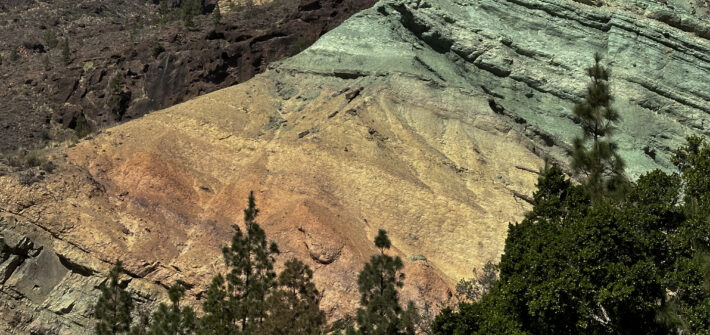
Azulejos de Veneguera – The Colourful Rocks of Gran Canaria The Azulejos de Veneguera are located in the south of Gran Canaria on the GC-20-200 between Mogán and Aldea de San Nicolás. Colourful rocks and entire rock bands are commonly found on the Canary Islands. However, the Azulejos de Veneguera shine with a unique intensity. […]
Circular Walk Mogán – Tauro – Molino de Viento
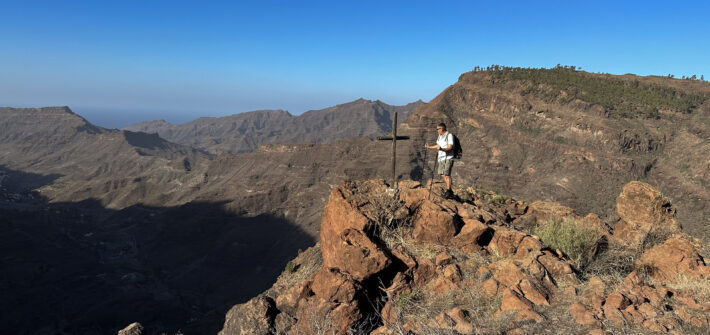
Puerto de Mogán and Mogán – a Popular Excursion Destination More well-known than the village of Mogán is the holiday resort of Puerto de Mogán. The famous harbour and frequently visited tourist spot emerged in the 1980s right on the coast. However, the village of Mogán, which lies a bit further inland, has existed for […]
Short Circular Hike around Roque Nublo

Roque Nublo – Landmark of Gran Canaria Roque Nublo (the Cloud Rock) is an approximately 65-meter-high imposing rock located in the center of the island in the Tejeda district on Gran Canaria. This impressive rock is considered the island’s landmark. Standing at 1,813 meters above sea level, it is visible from afar and is the […]
Hiking around the small Canarian village of La Culata
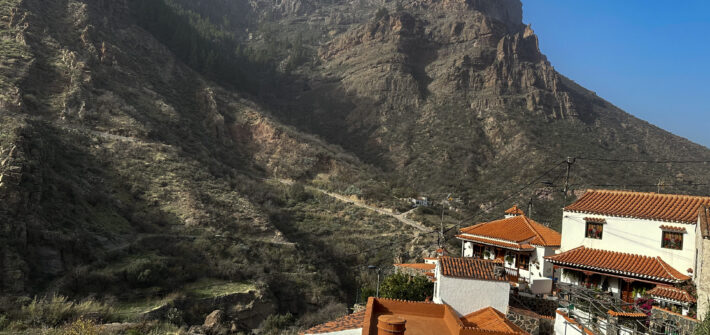
La Culata – Two small or one big hiking circuit The small village of La Culata is located at approximately 1200 meters above sea level in the center of the island of Gran Canaria and belongs to the municipality of Tejeda. In the village itself, there are still many traditionally built Canarian houses. These were […]
Circular Hike around Presa de Las Niñas
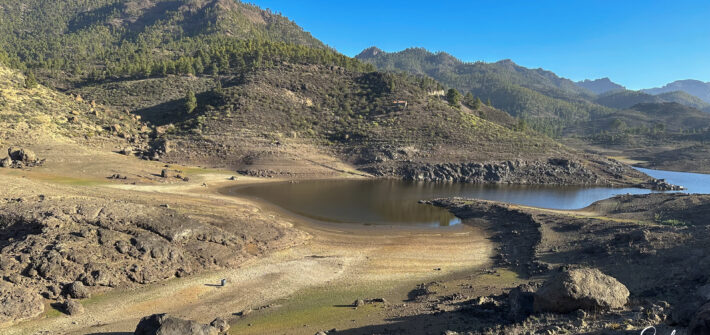
The Presa de Las Niñas reservoir in the heart of the Gran Canaria Biosphere Reserve The Presa de Las Niñas reservoir is located in the Llanos de la Yerbahuerto at an altitude of approximately 900 meters. This area belongs to the Parque Rural de Nublo, located within the Gran Canaria Biosphere Reserve. In June 2005, […]
